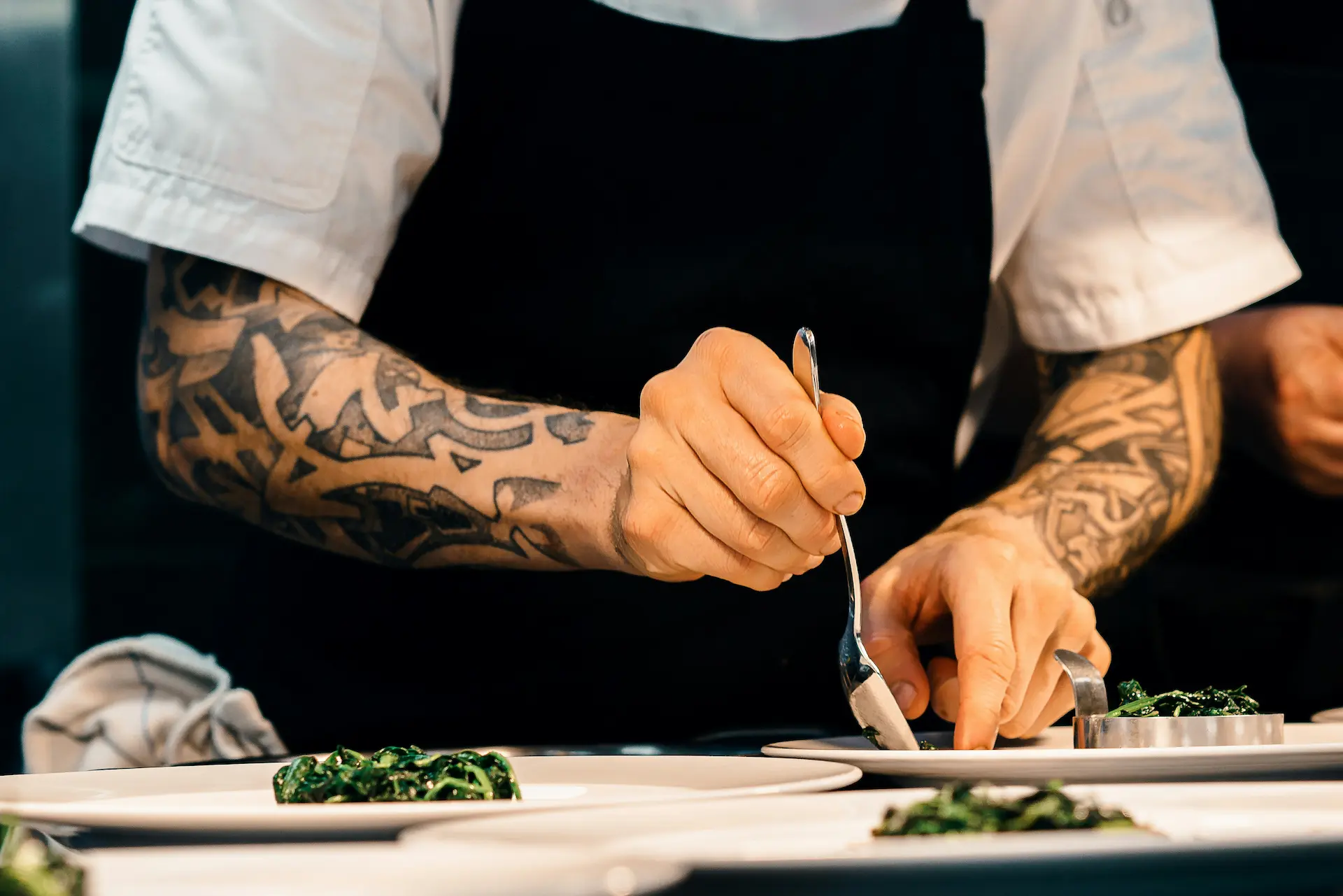
What is the Google Local Pack?
90% of internet searches are made on Google, and half are local. The “Google Local Pack” highlights several local businesses following an internet user’s search. Good news: Google has recently introduced the “Multiple Local Pack”. Unlike the traditional local pack, this one will display three businesses several times on the same page.
It’s definitely in your restaurant’s interest to work on its SEO to be included in this local pack and stay competitive.
Here is the local type when you type “Michelin restaurant in Amsterdam”. Bridges restaurant, Zenchef customer, in first position. We’ll look at what might explain this later.

How does Google deliver local results?
For Google, 3 factors are the most decisive when it comes to local referencing:
- Proximity to the user. Queries containing a specific location, such as “Italian restaurant around me“, lead to results adapted to that location. If no location is specified, Google uses the user’s geolocation.
- Result relevance: Selected results are relevant to the user’s query. For example, a burger restaurant will not be displayed if the query is “Japanese restaurant”.
- Brand awareness (prominence): Google also considers the brand awareness of restaurants, based on the number of clicks, website interactions, online mentions (press articles, social networks), and the quality of guest reviews.
An optimized and streamlined Google Business Profile page
The key to being listed in the Google local pack is to have the most complete Google listing possible. By complete, we mean the following:
- Key information: Restaurant name, address, precise opening hours, website URL, telephone number, description…
- Primary and secondary categories: The primary category concerns your core business = restaurant. The secondary categories specify your concept. If you run an Italian restaurant, your secondary categories might be: risotto, pizza, antipasti, cocktails etc.
- Attributes: These refine your position on more specific queries. For example, there are attributes based on guest profiles (family-friendly restaurant), atmosphere (relaxed, festive), or a particular strength (terrace in summer, payment at the table, etc.).
- Photos, your menu, google posts, a reservation button: all these additions further strengthen your presence.

Here we can see that the Belhamel restaurant has many reviews, it shows its menu, the opening hours are well displayed, and there are different call-to-action buttons: website, phone number, take-away option. The categories and attribute descriptions are well-done.
The impact of reviews on brand awareness
Brand awareness and online reputation are of great importance in Google’s analysis of local searches. What is part of online reputation ? Reviews. The more reviews you receive on your Google page, the better you rank in search results. Positive reviews increase your rating, attracting new guests. And by inviting these guest to book on your website or via your Google button, your restaurant gains in referencing. A virtuous circle has begun.
Important: Google has recently updated its reviews’ category. You may notice that you no longer only see Google reviews on your listing, but also those from third-party platforms such as TripAdvisor or Yelp. This diversity of reviews will enable businesses to improve their local referencing and visibility.
To encourage the collection of reviews for your restaurant, use a reservation management platform like Zenchef. After the meal, your guests can automatically receive a review request by email. They can then share their experience on the platform of their choice: your Facebook page, a local guide, your Google listing…

Good or bad, reviews need to be managed with care, using positive feedback to your advantage and putting in place an appropriate response strategy to negative reviews.
The importance of local content on your site
Your website is like a window on your neighborhood. It reflects the essence of your local business, containing concrete details about your cuisine, history, and soul. Beyond telling all this on your site, we encourage you to truly integrate yourself into your environment. You’ll need to offer local content on your site to show Google that you’re a key player in your community.
Here are a few ideas for actions you can implement and promote online:
- Organize local events: concerts, live music
- Source and promote local products
- Offer your space to local businesses: meetings, seminars, after-work events
- Offer workshops and activities: wine tasting, cooking class…
The community aspect can have a very positive impact on your guest experience, promoting social interaction, loyalty, word-of-mouth marketing, local collaborations, and guest engagement in the running of the restaurant.

Important: Beyond having local content, it’s the keywords on your site that will improve your search visibility. Use long-tail keywords. Long-tail keywords are more specific search terms and target more precise audiences. They are less competitive and can lead to higher conversion rates.
Examples of long-tail keywords: Vegan Mexican restaurant in Miami Beach, Restaurant offering Valentine’s Day in Berlin, Restaurant serving local food in Paris…
Inspiring examples from Zenchef restaurants
Restaurant Flore
If you type in “restaurant Michelin organic food Amsterdam”, the Restaurant Flore appears in third position in the Google results. Naturally, the site contains many keywords related to this search. We also notice that the dishes on the menu are not just listed one after the other, but that there’s a whole story telling about them.

Capital C Amsterdam
By typing “restaurant private dining Amsterdam” it’s the Capital C Amsterdam restaurant that comes up in the first search results. Note that the site is “sponsored”, meaning that the restaurant has paid for keywords to be better referenced. Also, the restaurant name includes Amsterdam which could help. Beyond that, the restaurant uses all the ingredients of SEO: highly polished content, a focus on local businesses, the possibility of reserving meeting rooms, reviews published on the site…

Sphere restaurant Paris
The Sphère restaurant in Paris is very well positioned on the keywords “gastronomic restaurant”. There are several reasons for this. The website contains many links to press articles, the history of the restaurant and the chef are very well highlighted. The restaurant has 3800 reviews and is very active on Instagram, elements that play on the “Notoriety” aspect analyzed by Google.

The Jane Antwerp
Try to find the “best restaurant in Antwerp” and you’ll see that The Jane comes up in the first results. Analysis: The restaurant’s website contains various page categories describing its cuisine and identity. The restaurant promotes its own magazine and there are links to Gault & Millau, Michelin and other local guides. The Google page finally has all the hallmarks of an optimized page: 1.3k reviews, a long description, photos…

Golden Temple Amsterdam
If you type in “best vegan restaurant in Amsterdam”, Golden Temple appears in second place. We can assume that its visibility is due to several factors: the presence of a blog on the site, an entire “about us” section that includes “vegetarian” and “vegan” on numerous occasions, 1200 Google reviews, most with 5 stars, an intuitive reservation widget…

Investing in optimizing your Google Business profile, website and overall brand awareness is an essential step in increasing your restaurant’s visibility on search engines. By analyzing competitors’ strategies and regularly testing new approaches, restaurateurs can ensure they remain competitive in a constantly evolving environment. Be proactive and implement ongoing efforts to attract new guests and build loyalty.














.webp)

.webp)




















.webp)










